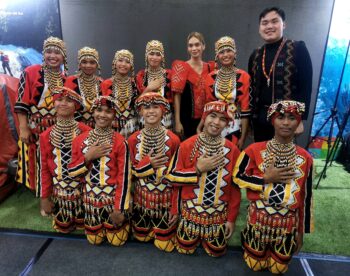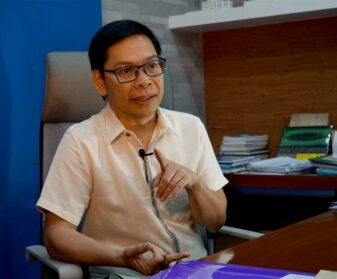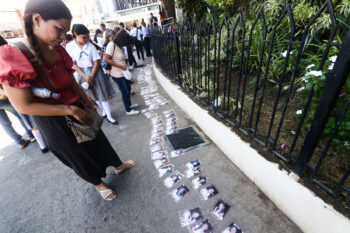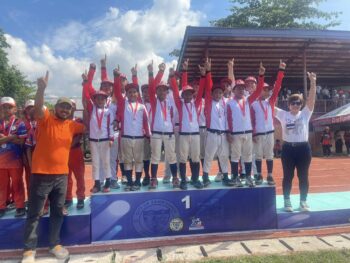I. AFP’s Recapitulation
GENERAL SANTOS CITY, October 7, 2013 – “The Zamboanga City crisis is officially over”, declared Malacañang last September 28, “Not over yet; clearing operations are still going on,” countered Defense Secretary Voltaire Gazmin. The “clearing” would take two weeks and the residents could not return yet, clarified AFP public affairs chief, Lt. Col. Ramon Zagala. “Correct!”, the shots from the MNLF stragglers echoed, bringing down a few more dead and wounded.
To the Zamboangueños, especially to the more than 100,000 displaced residents of the coastal barangays left in ruins, these statements were comforting. But they knew that their crisis – the period of reconstruction — would continue indeterminately. Perhaps, they were curious to know what real assistance they would get from the government after the 90-day or so relief period. Not quite comforting if they looked at the experience of typhoon-ravaged areas of Mindanao.
AFP’s Recapitulation
What really happened before and after September 9, 2013? Do what the residents know corroborate what the military and Palace have told the national media – surely, what they want the whole country, including the Zamboangueños, to believe? This, the Thomases are likely to ask out of curiosity as the military tells the final version – the recapitulation – of the “crisis”.
Here are the “what” and the “how”, as well as the “where” and the “when”, as told in Philippine Daily Inquirer, October 1, 2013: “Coordinated MNLF attack shows Misuari’s hand – APF”, according to Lt. Col. Zagala:
(1) The MNLF forces numbered about 400. They were in five groups – one, under Ustadz Habier Malik of Jolo; two, under Commanders Ugong and Ismael Dasta from Basilan; and two, under Commanders Iger Misuari and Haider from Zamboanga Sibugay. [As of October 1: Malik was reported unaccounted for; Ugong surrendered; Iger Misuari, captured; Dasta and Hadier, killed.]
(2) Military: “Malik [was] not the overall commander. He just made himself available to the media.” Hence, the five commanders’ “separate but coordinated moves …betrayed [Nur] Misuari’s hand in the deadly attack on Zamboanga City”.
(3) The 400 “stormed the Zamboanga coast at dawn on September 9. … Unknown to them, the government (had) discovered their plans three days earlier. When they landed on the coast, Army, Navy, Marine, Scout Ranger and elite police troops blocked them, sparking fire fights that spread to the villages.”
(4) “To thwart a military assault, the rebels seized scores of villagers and used them as human shields, forcing the confrontation to drag on for three weeks.” By the end of the crisis the “195 villagers seized by the rebels …had been rescued safely, escaped or were freed”.
(5) The objective of the MNLF forces was “to seize City Hall and plant the flag of an
independent ‘Bangsamoro Republik’ there”.
(6) MNLF forces accounted for: 482 — 190 killed; 292 either captured or surrendered. [As more were reported still hiding among the ruins or killed in the clearing operations, the total number of “invaders” will be more than 500. – ppd]
[From other reports, as of September 28: Inquirer.net, 166 killed; (No figure for wounded]; Inquirer Mindanao, 167 killed; (no figure for wounded); NDRRMC (MindaNews), 105 killed; no figure for wounded.]
(7) Military and police casualties: 23 killed; 180 wounded.
[From other reports, as of September 28: Inquirer.net, 23, killed; (no figure on wounded); Inquirer Mindanao, 23 killed; 181 wounded; NDRRMC (MindaNews), 23 killed; 181 wounded.]
(8) Civilians: 12 killed; 118,819 fled their homes as the rebels burned the villages.
[From other reports, as of September 28: Inquirer.net, (no figure for civilians); Inquirer Mindanao, 12 killed; 72 wounded; more than 100,000 displaced; NDRRMC (MindaNews), 9 killed; 57 wounded; 118,119 displaced.]
“Recapitulation” Items (6), (7) and (8) compared with other media reports – in parentheses after each item above – with one source independent from the military may be taken as fairly reliable bases for the assessment of the humanitarian and human cost of the Zamboanga City “crisis”, “war”, “invasion” or “siege” – as variously called – or just “standoff”. It would be interesting to relate to other reports Items (1) to (5).
MNLF Forces (1)
The number reported initially was 180 – later, from 200 to 300. There was no distinction of groups — the Malik from Jolo; the Ugong and Dasta from Basilan; or the Iger Misuari and Haider from Zamboanga Sibugay. Malik was acknowledged as the leader. He spoke to media of the conditions to end the standoff and release safely the hostages. He figured in reports about the failed attempts of Vice President Jejomar Binay, ARMM Gov. Mujiv Hataman and Fr. Michael Ufana to have negotiations.
The purportedly final number of 400 is an incorrect number. The 190 killed plus the 292 either captured or surrendered (the wounded are among them) equals 482. There were at least seven killed during the clearing operations and 20 or more still hiding. ANC television news channel reported 100 who had escaped to Jolo — Malik, still not accounted for, possibly with them.
By the figures above, the number of MNLF rebels involved must be more than 600. The difference of 420 based on the initial report and 200 from the October 1 “recapitulation” are significant. They arouse curiosity with damning implications on the accuracy and validity of military intelligence and reports.
Misuari’s Hand (2)
As initially reported, the march to City Hall to plant the “Bangsamoro Republik” flag was on orders of Misuari and the MNLF rebels were under the command of Malik. From Day One, the reports assured the government troops were in control and showed disarray and desperation among the rebels. “Separate” and “coordinated” moves – never reported — sounded more of Zagala’s deduction, more of theory than fact with loose ends and some improbabilities.
Misuari was somewhere in Sulu – location unknown – not in Zamboanga City. To coordinate the moves of five separate groups it would need an A-one communication system. Curiously, did the rebels have such communication system? Did the military find any evidence of it?
Curiously: Did the military discover a line of command linking the five commanders? Being very far from the scene, Misuari – granting he was in overall command – could not coordinate separate groups in the field by giving separate orders by cellphone, smartphone, whatever, to each group commander as demanded by changing situations. One of the five commanders must have to coordinate their field operations.
Misuari’s “direct hand” in coordinating the “moves” of separate rebel commanders is gut conclusion, not verified fact. Is this meant to strengthen the rebellion charge against Misuari?
MNLF Intercepted (3)
The 400 stormed the Zamboanga coastal villages on September 9. But the military intelligence had discovered the plan three days earlier. The Army, Navy, Scout Ranger and elite police troops were there to block their landing. Yet the rebels were able to land and “firefights … spread to the villages”. The inconsistencies are puzzling.
First, the 400 attacked from the sea. That included the two groups from Zamboanga Sibugay. That puzzles.
Second, why did the naval force allow them to land? Why did the blocking force allow the fighting to spread to the villages? That the superior forces of the state failed to stop a small enemy force from landing is hard to believe. The implications are confusing.
Third, this also suggests that the 400 entered as one full force on September 9. This is contrary to media reports from hostages, captured rebels and other local sources.
One report (MindaNews, September 22: Breaking the peace in Sulu and Zamboanga) said that the rebels from Sulu entered Zamboanga City in batches by motorized bancas since mid-August or earlier. The group that encountered the Navy Seals at about 1 a.m. on September 9 was the last batch. The others from Basilan and Zamboanga Sibugay must have similarly infiltrated.
That the residents of the coastal villages were originally refugees from Sulu, Basilan and Zamboanga Sibugay made the infiltration easy. In another report, strangers passing for relatives or friends of the residents had been noticed increasing in number. In the morning of the attack, these strangers were in MNLF uniform and bearing long arms.
Another report (MindaNews interview with a released hostage) told of a group of about 20 Yakans that obviously landed in a mangrove area at past midnight, the first hour of September 10, knocked at the hut of the family of a seaweed farmer there, and took them along as “guides” to barangay Sta. Barbara to join their comrades.
Still another report suggested that the rebels had stocked arms and ammunition in the villages. During the fighting, rebels were seen going to some houses to replenish their ammo. The President had wondered why they did not seem to run out of ammunition, the military claims to the contrary.
Villagers Seized (4)
“To thwart a military assault, the rebels seized scores of villagers and used them as human shields, forcing the confrontation to drag on for three weeks” suggests the rebels had become desperate. This does not refer to the September 9 dawn encounter alone.
What the October 1 PDI report was saying must be this: The 400 rebels were able to break through the military blocking force and occupied six villages but the military came back with more superior force. As reported, immediate reinforcement came from Negros Occidental. The military had 4,000 troops, completely surrounded the rebels, strafed, bombed, shelled and forced into a constricted area.
That the rebels had seized six villages must be clarified. The people evacuated to avoid being caught in the firefights, the bombing and shelling. The military reported 118,819 people fled; NDRRMC, 109,286 displaced; DSWD, 81,808 evacuees in its centers. The six villages have a combined population of 112,874 (MindaNews: based on figures from the National Statistical Coordinating Board in Zamboanga City).
Only “scores of villagers” were taken hostage (“score”, a collective number like “dozen”, is 20). Of about ten scores of hostages, 12 were killed and 195 rescued or released or had escaped. Apparently, the 12 were killed in the crossfire or during the rescue. Only one was reported to have been shot while trying to escape.
Parts of the villages were razed to the ground – by fire, bombs and shells – as shown in print media pictorials and television footages. The rebels were blamed for the burning although bombs and shells could also have started the fires.
The MNLF Objective (5)
The MNLF wanted to raise the flag of the “Bangsamoro Republik” at the Zamboanga City Hall. How that turned into a three-week “war” reveals a two-phase plan – Plan A, peaceful; Plan B, by force should Plan A be denied. This makes the report about the infiltration of the rebels more credible than the forceful entry on September 9.
Misuari’s spokesmen told media about the plan. The MNLF was to march peacefully to the city hall, raise the “Bangsamoro Republik” flag and have a rally. One spokesman blamed the military for using force to stop a peaceful march; Misuari’s followers, he said had to defend themselves. If the march was peaceful, why did the marchers have guns? In reality, there was no march.
Captured rebels related that they were sent to Zamboanga City for a peaceful rally. They did not expect the “war”. The façade falls apart. If they came from their homes in Sulu, Basilan and Zamboanga Sibugay to take part in a peaceful rally, why did they bring along their guns?
The spokesmen said their request for a rally permit had been turned down. If so, was it reasonable to resort to armed uprising? Curiously, of course: Why were there no reports of civilian participants? City Mayor Isabelle Climaco-Salazar said the MNLF “never asked for a permit to hold a rally” (MindaNews, Sept. 22, Breaking the peace …)
Why dissemble? The real objective was to compel the Aquino III government to resolve in favor of MNLF the issues on the full implementation of the 1996 GRP-MNLF Final Peace Agreement under review since 2007. The Zamboanga City showdown was the sequel of the August declaration of the “Bangsamoro Republik”.
More Questions
The military “recapitulation” of the Zamboanga “war”, like all other earlier military press releases with all the vagueness and inconsistencies, should be understood in the light of military civil relations strategy. Civilian confidence in the military is vital to security.
The standoff is over. But the three-week “war” that one peace advocate described as “pyrrhic” raises these questions: (1) Was the standoff necessary? (2) Could it have been avoided? (3) What does it reveal of the state of the Moro or Mindanao problem? — (More in next posting) (“Comment” is Mr. Patricio P. Diaz’ column for MindaViews, the opinion section of MindaNews. The Titus Brandsma Media Awards recently honored Mr. Diaz with a “Lifetime Achievement Award” for his “commitment to education and public information to Mindanawons as Journalist, Educator and Peace Advocate.” You can reach him at patpdiazgsc@yahoo.com.)






